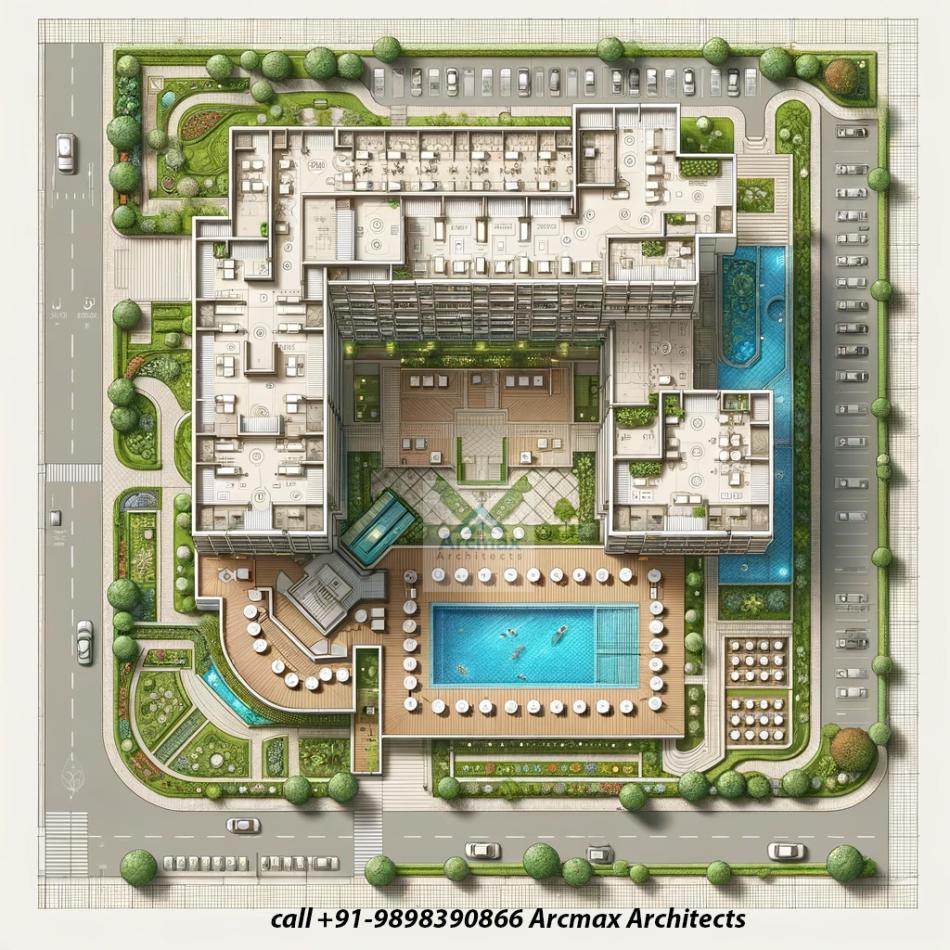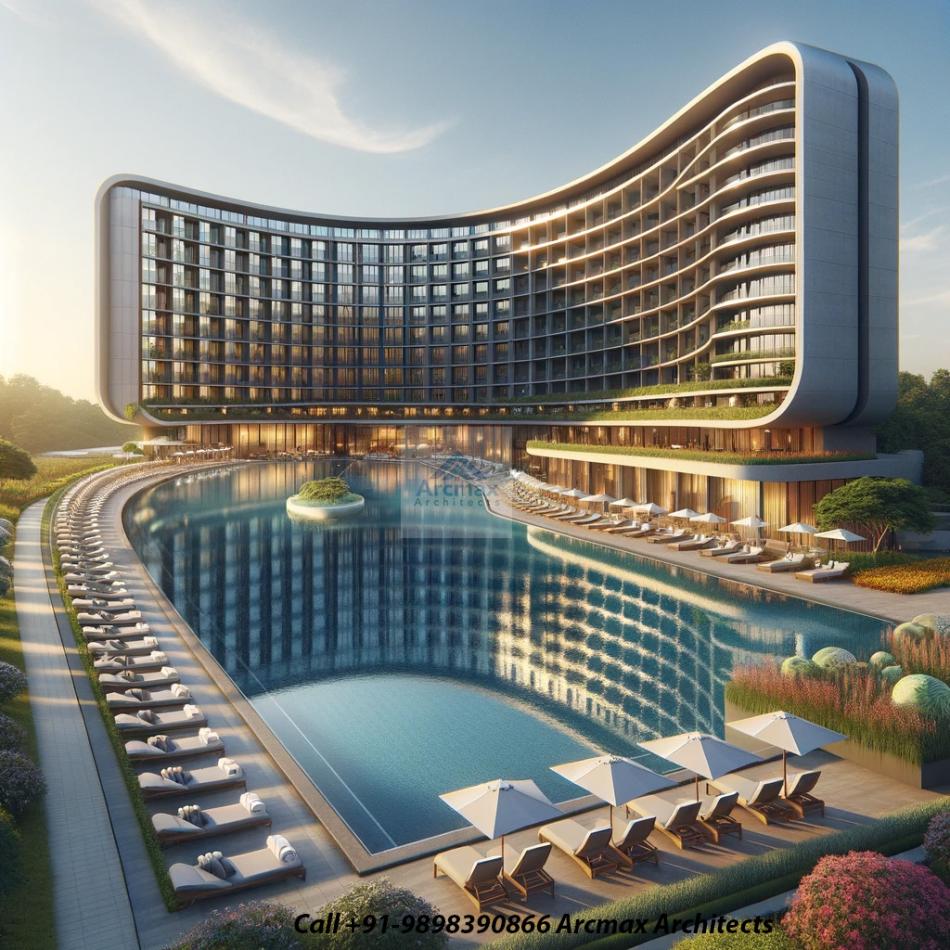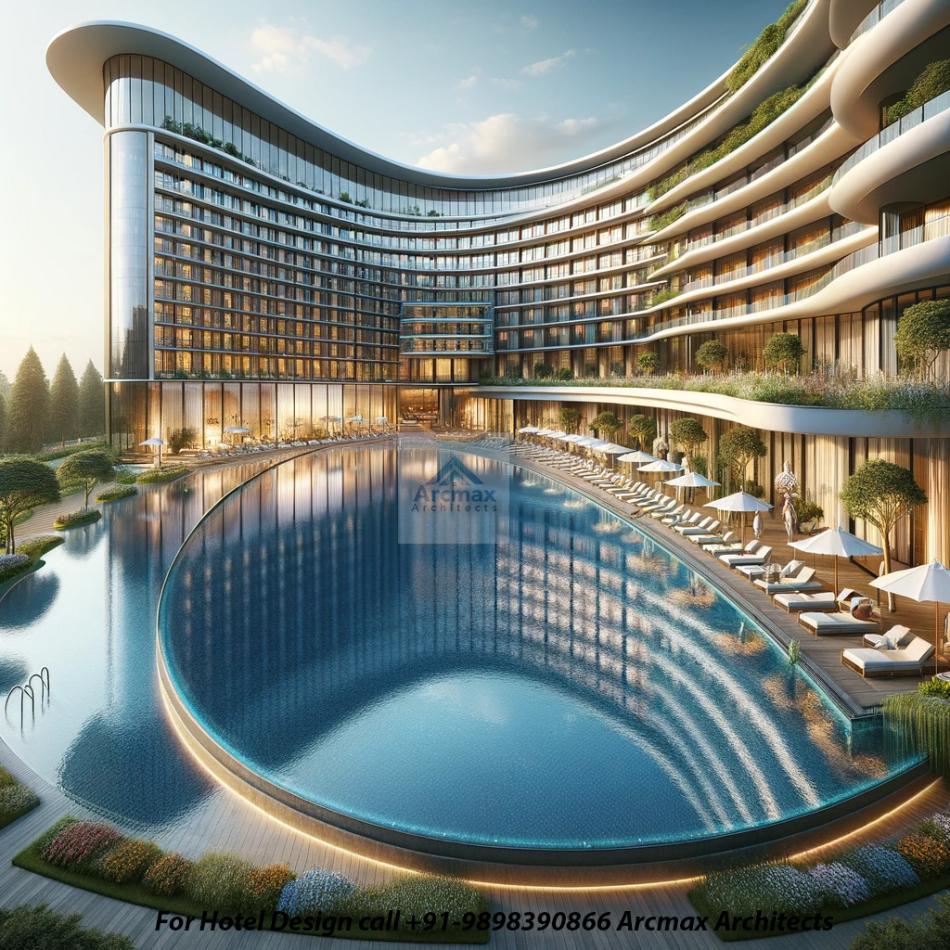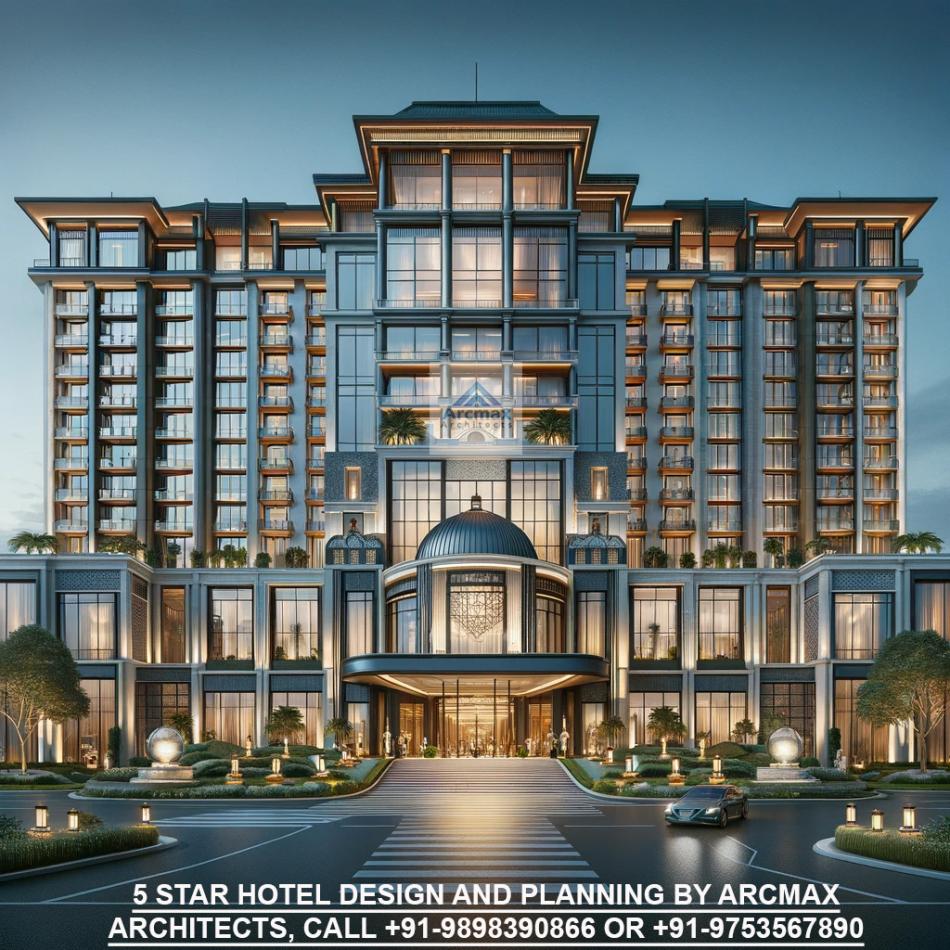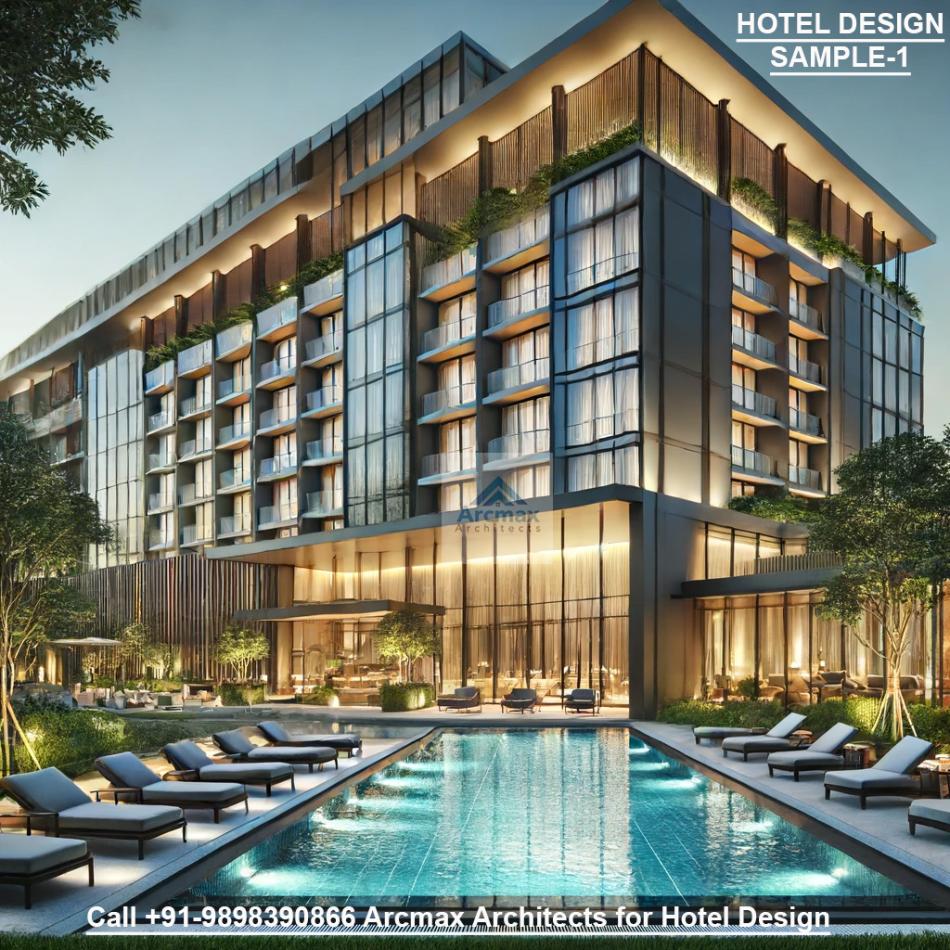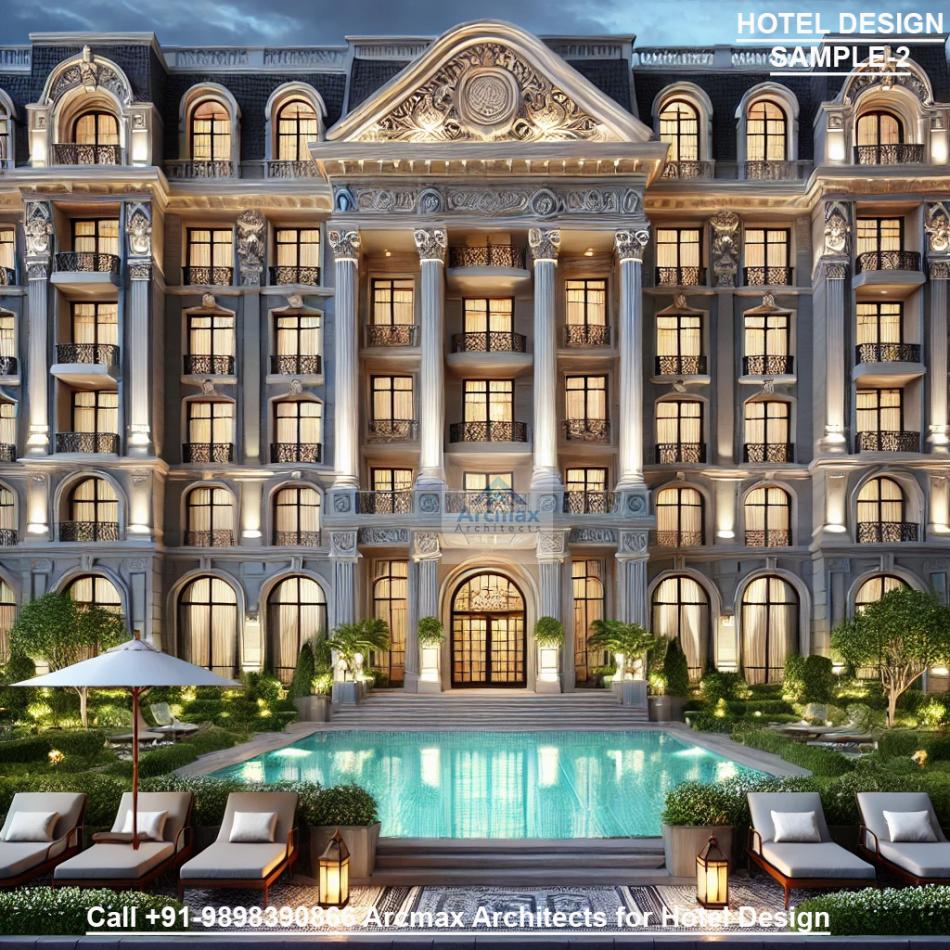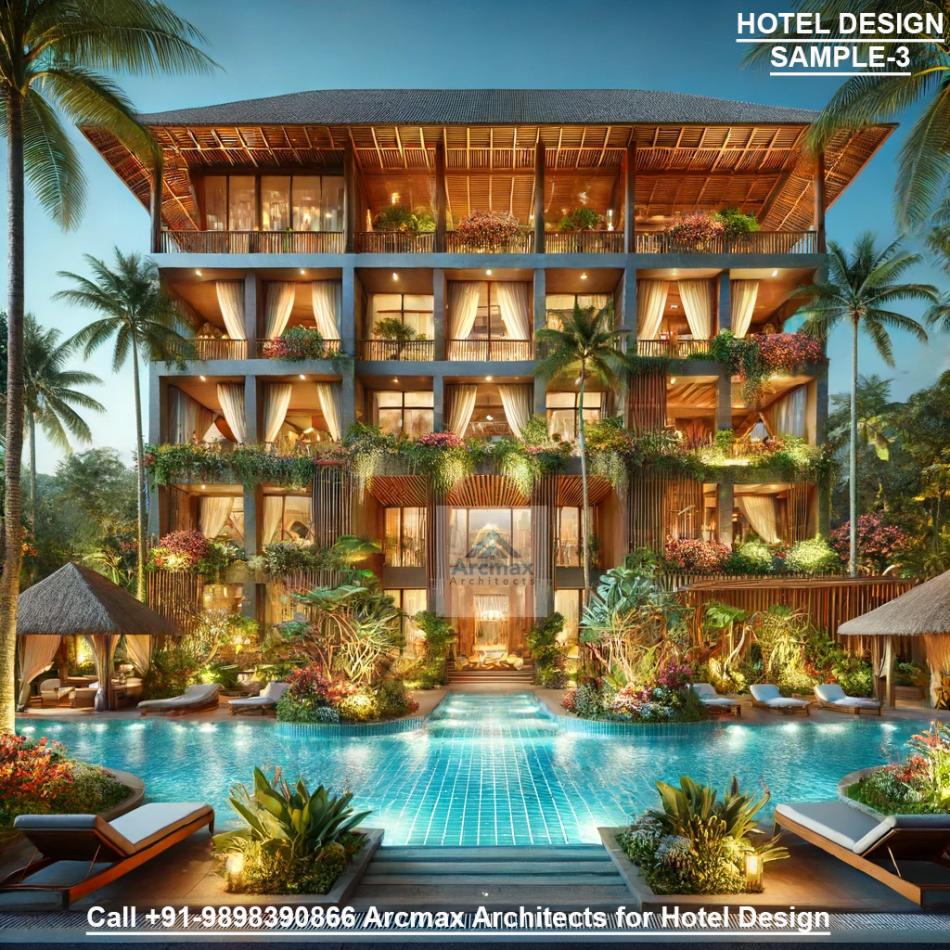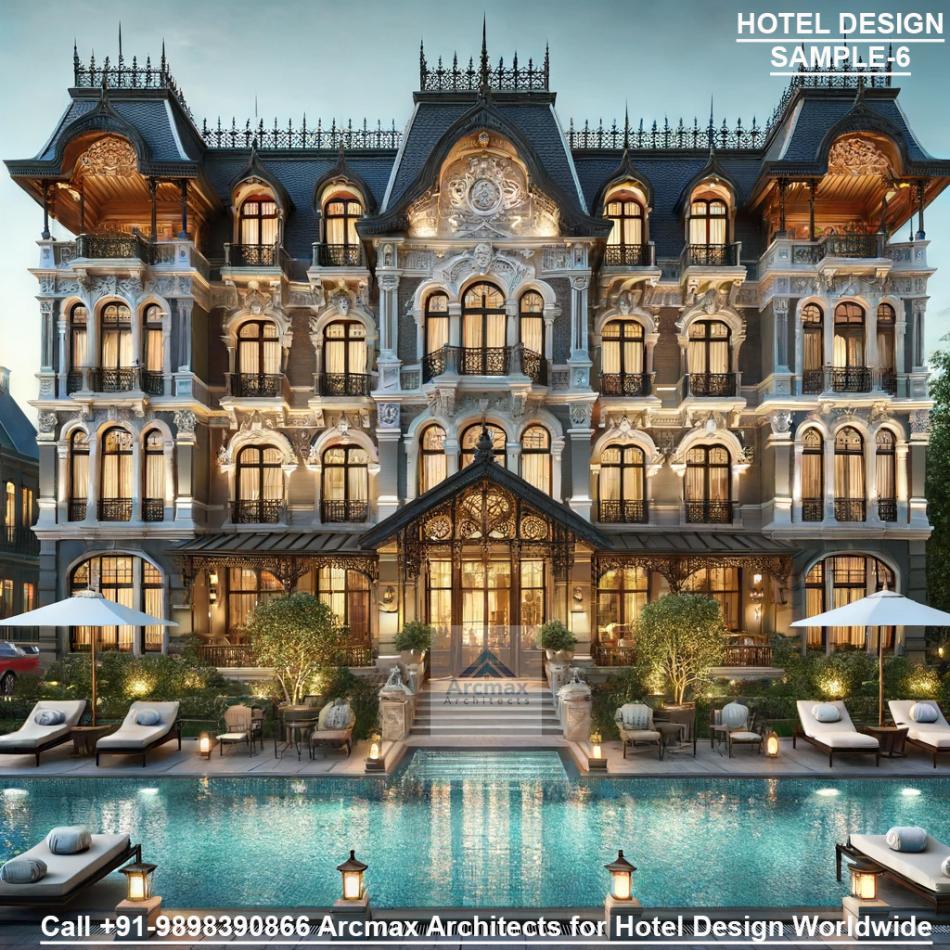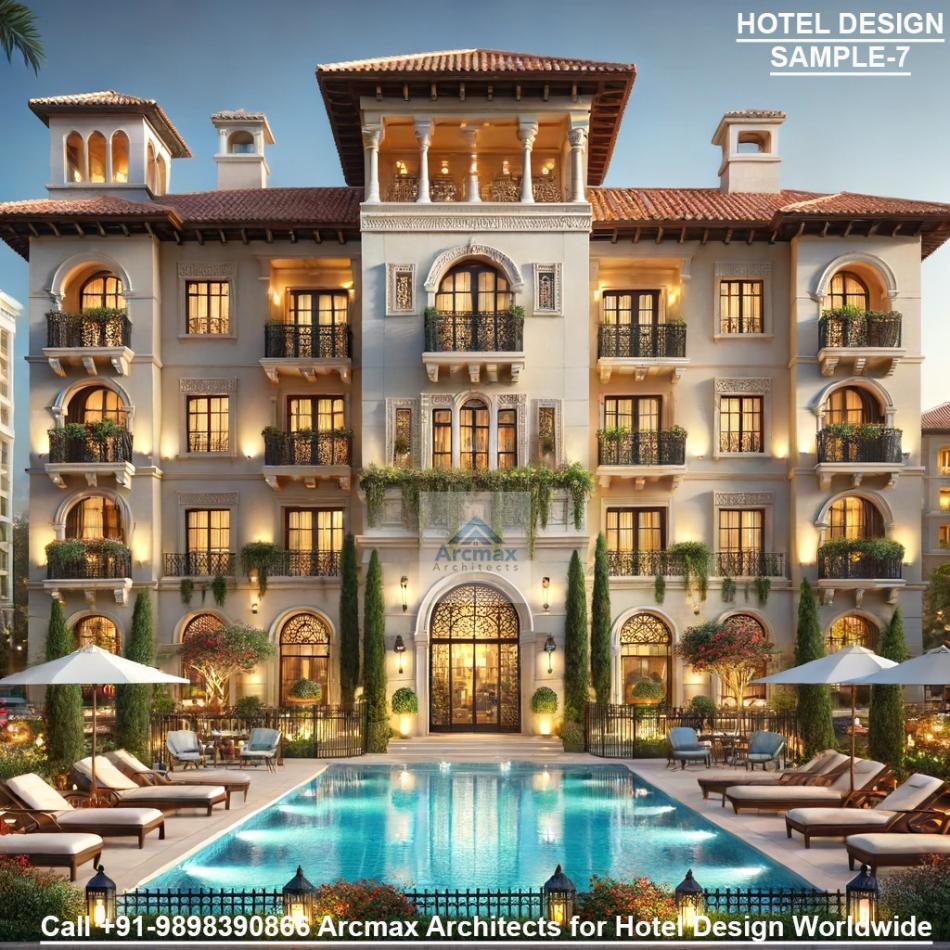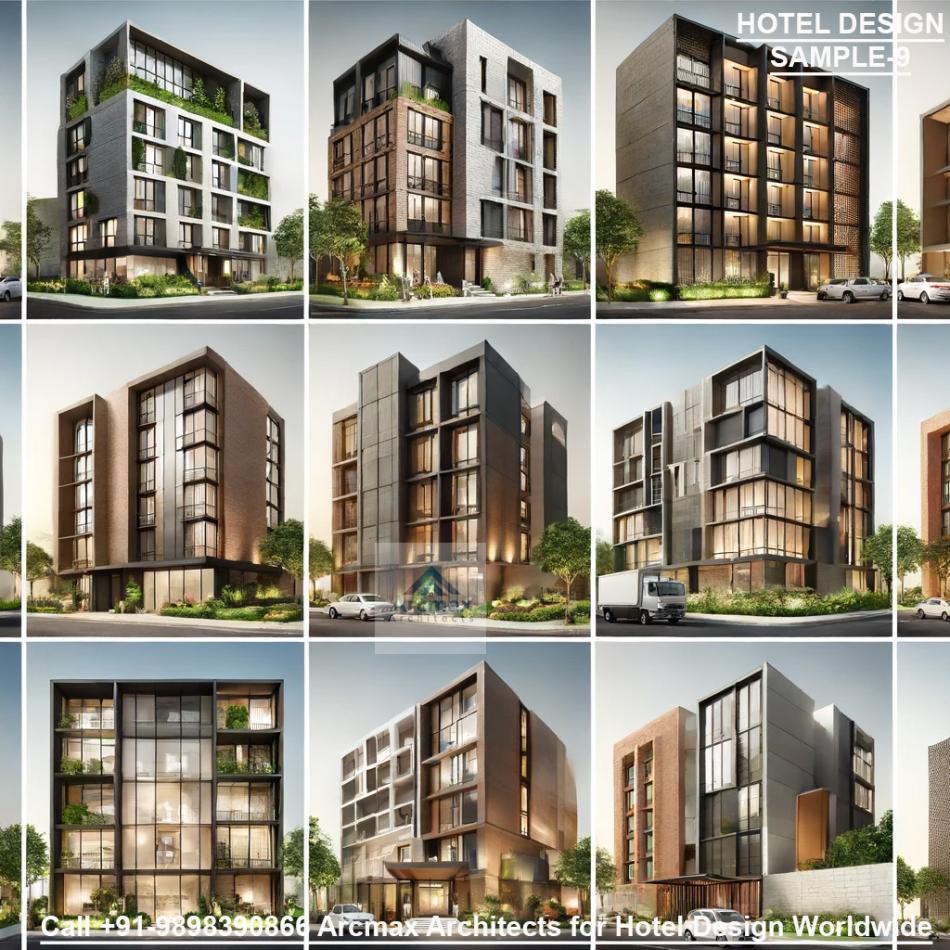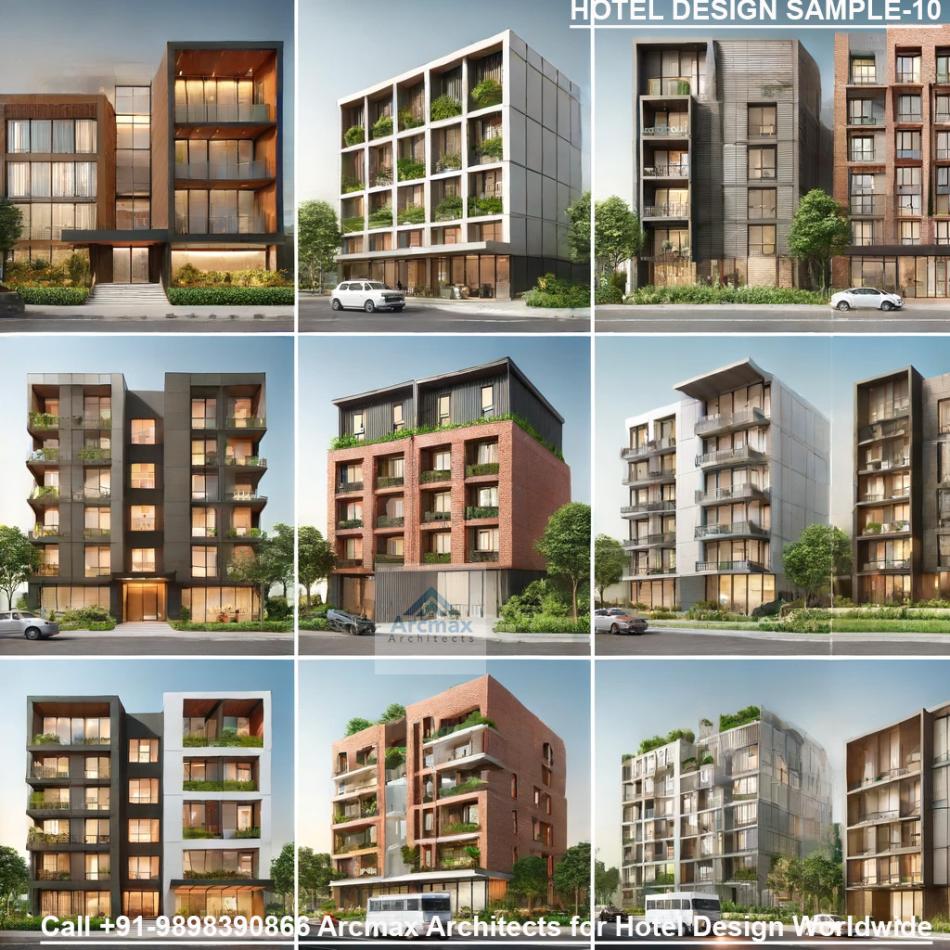Bakeri City, Pincode: 380015 Ahmedabad, Gujarat, India,
244 Madison Avenue, New York, United States
Our Client






Best Architects for Resort hotel design and planning in India, united states, united kingdom and africa
Resort hotel design and planning is a multifaceted process that combines architecture, landscape design, and guest experience to create a destination that offers more than just accommodation. Resort hotels are typically located in picturesque or unique settings, offering a range of amenities and activities that cater to leisure and relaxation. The goal is to create a self-contained escape that appeals to guests' desires for comfort, entertainment, and immersion in the natural or cultural environment. Here are essential considerations and strategies for successful resort hotel design and planning:
1. Integration with the Environment
- Site Selection: Choose a location that enhances the resort's theme, whether it's a beachfront, mountain, forest, or urban rooftop setting.
- Sustainable Design: Incorporate eco-friendly practices and materials that minimize environmental impact and blend the resort into its natural surroundings.
- Outdoor Spaces: Design extensive outdoor areas, including gardens, pools, and recreational facilities, that encourage guests to connect with the environment.
2. Guest Experience and Amenities
- Themed Concepts: Develop a strong theme that resonates through the entire resort, from architecture to interior design to activities offered.
- Variety of Accommodations: Offer a range of lodging options, from standard rooms to luxury villas, catering to different preferences and budgets.
- Comprehensive Amenities: Include a wide array of amenities such as spas, fitness centers, dining options, entertainment venues, and children’s activities to keep guests engaged.
3. Accessibility and Layout
- Ease of Movement: Ensure the resort layout allows for easy navigation and accessibility to all areas, considering the needs of all guests, including those with disabilities.
- Zoning: Strategically place different areas (e.g., quiet zones, family-friendly zones, nightlife) to optimize guest satisfaction and minimize conflicts.
4. Cultural and Local Integration
- Cultural Sensitivity: Incorporate local architecture, design elements, and art to reflect the culture and history of the resort’s location.
- Community Engagement: Engage with the local community by sourcing local products, offering tours, and creating programs that benefit both guests and locals.
5. Innovative and Flexible Design
- Adaptable Spaces: Design spaces that can serve multiple purposes or be easily reconfigured for different events and activities.
- Innovative Features: Incorporate unique features and technologies that enhance the guest experience, such as immersive environmental design or smart room features.
6. Sustainability and Eco-Friendliness
- Renewable Energy: Utilize solar, wind, or other renewable energy sources to power the resort’s operations.
- Water Conservation: Implement water-saving measures such as rainwater harvesting, greywater recycling, and efficient irrigation systems for landscaping.
- Waste Reduction: Develop comprehensive recycling and composting programs to minimize waste production.
7. Marketing and Branding
- Unique Selling Proposition (USP): Clearly define what sets the resort apart from competitors, whether it's an exceptional location, unique amenities, or a specific theme.
- Digital Presence: Develop a strong online presence with an engaging website, active social media, and virtual tours to showcase the resort’s offerings.
Designing and planning a resort hotel is a complex but rewarding process that requires a holistic approach to architecture, guest experience, and environmental sustainability. By focusing on creating a unique destination that offers guests a seamless blend of relaxation, entertainment, and cultural immersion, developers can ensure their resort hotel stands out in a competitive hospitality market. Successful resort hotels not only provide a memorable escape for guests but also respect and enhance the natural and cultural environment in which they are located.




